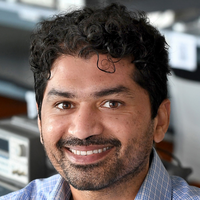Subject to change.

Subject to change.

Ghulam Rasool is an assistant member of the Department of Machine Learning with a secondary clinical appointment in the Department of Neuro-Oncology at the H. Lee Moffitt Cancer Center & Research Institute, Tampa, FL. His research focuses on building trustworthy multimodal ML/AI models for cancer diagnosis and risk assessment. His research efforts are funded by the National Science Foundation (NSF) and NIH. He received the 2023 Junior Researcher Award in the Quantitative Sciences at Moffitt.